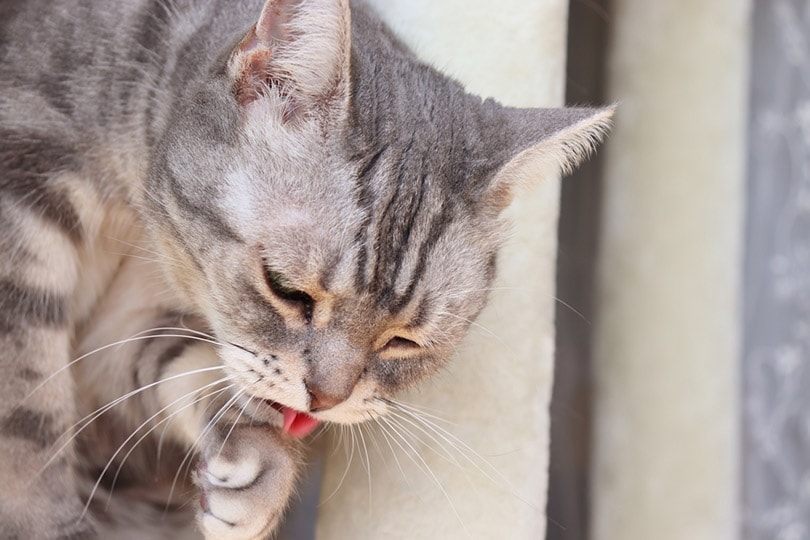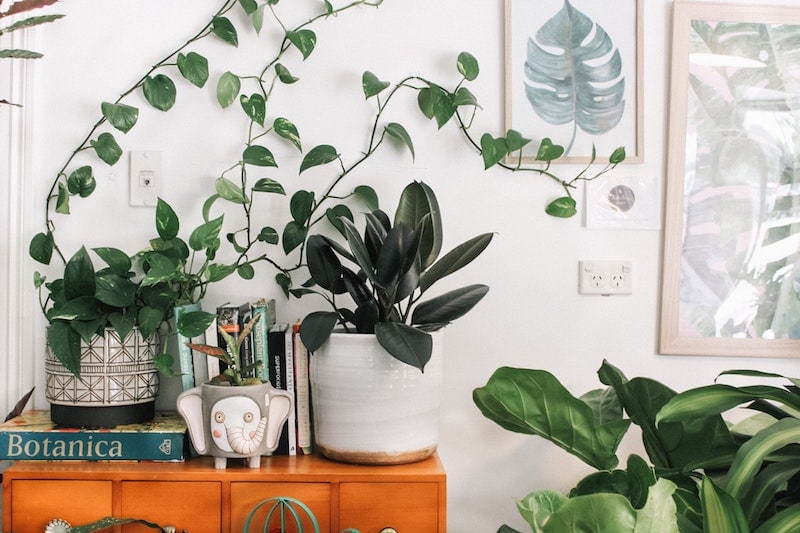The American rubber plant (Peperomia obtusifolia) is native to South America. Nonetheless, it is going to flourish indoors with correct humidity and satisfactory daylight. This plant can also be known as a child rubber plant and a pepper face plant.
Your cat might take an curiosity in your rubber plant for a lot of causes. It’s most likely enjoyable to swat on the leaves, or possibly the plant is “in the way in which” and taking on your cat’s favourite sunny windowsill! Chances are you’ll panic should you discover some enamel marks in your rubber plant, however relaxation assured, the species shouldn’t be poisonous to felines.
What occurs if a Cat Eats a Rubber Plant?
An American rubber plant shouldn’t be toxic to cats (or canines). Nonetheless, your kitty might have an upset abdomen after consuming this plant. Some cats have delicate stomachs and can vomit after consuming something unfamiliar. Felines are additionally obligate carnivores, and their digestive techniques are designed to eat meat, not complete vegetation.
You needn’t fear in case your cat throws up a few times after which resumes its common consuming habits. Quick-lived diarrhea that clears up by itself shouldn’t be a trigger for concern, both.
Though the American rubber plant is not a poisonous species, a plant with an identical title, the Indian rubber plant (Ficus benjamina), is poisonous to cats. This plant can also be known as a fig or weeping fig. Name your vet instantly in case your cat eats an Indian rubber plant.
My Cat Ate a Rubber Plant: When To Name a Vet

In case your cat eats an American rubber plant or one other non-toxic houseplant, you’ll wish to keep watch over them for some time. Attempt to maintain them in a safe space or small room for commentary. Contact your vet or head to the closest animal hospital in case your cat:
- Vomits repeatedly
- Refuses to eat or drink something at their subsequent mealtime
- Acts torpid or weak
- Has uncontrolled diarrhea
- Ate a plant you could’t determine
Don’t hesitate to name your vet everytime you’re involved about your cat’s well-being.
How To Hold Your Cat Secure From Houseplants
So long as you might have non-toxic vegetation in your house, it’s troublesome to inform who’s in peril: your kitty or the vegetation! Cats and greenery can coexist, however chances are you’ll have to make a number of changes.
Attempt hanging baskets from the ceiling, and make sure the surrounding space is freed from furnishings, because it’s simple to underestimate how far cats can leap. You can even maintain smaller vegetation within a terrarium.
Most cats don’t just like the odor of lavender or espresso grounds, so use this to your benefit. Sprinkle both one in your pot on prime of the soil. These odors ought to repel your cat and maintain them away out of your vegetation.
Lastly, your cat might play together with your houseplants out of boredom. It is likely to be time for some new toys or treats. A drained, stimulated cat is never mischievous!


Last Ideas
The American rubber plant shouldn’t be toxic to cats, however one other equally named plant, the Indian rubber plant, is poisonous to cats. Nonetheless, your kitty might vomit or have diarrhea after snacking on an American rubber plant. This GI irritation ought to cross shortly and clear up by itself. Contact your veterinarian in case your cat’s signs don’t clear up or should you can’t determine the houseplant your cat ate.
Featured Picture Credit score: Unsplash
